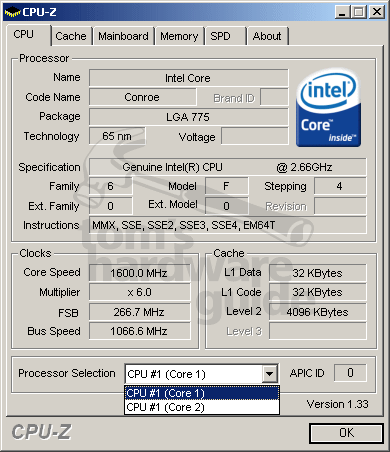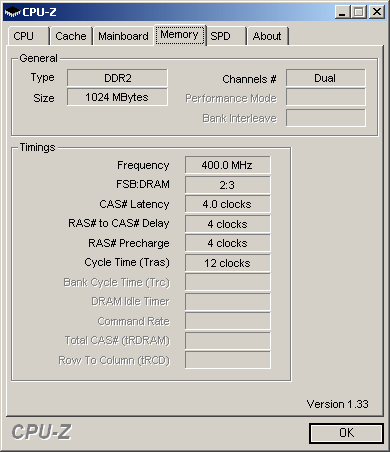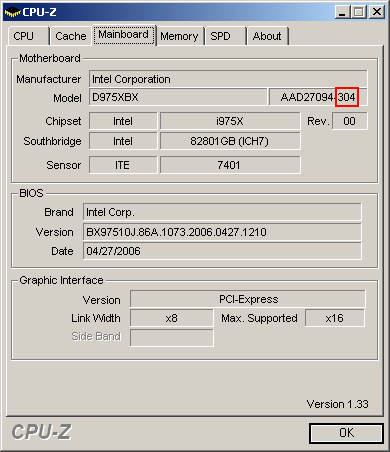First Benchmarks: Conroe vs. FX-62
SpeedStep
There are also parallels between Conroe and the latest generation of mobile processors from Intel: the maximum power consumption for a Conroe processor with a core clock speed of 2.66 GHz is approximately 65 W. If the CPU is only lightly loaded, it behaves very much like a notebook CPU, reducing its clock multiplier value using Intel's SpeedStep technology. The minimum possible multiplier value is x6, which produces a nominal clock rate of 1.6 GHz for an FSB of 266 MHz.
At the same time, core voltage levels have also been reduced. To conserve power and reduce heat output, the clock multiplier can be raised and lowered stepwise as CPU loads wax and wane - this sets the clock rate to match the processing load level. This technique shares the same characteristics as the Dynamic Power Coordination used in Intel mobile processors. According to sources inside Intel, Conroe also includes a greatly refined version of a technology called Power Gating, which permits the CPU to turn various functional circuit blocks inside the processor off when idle, and then on again when needed.
To cut down on power consumption, Conroe can throttle its core clock back to as low as 1.6 GHz
DDR-800 At CL4
The previous Intel-validated memory configuration for dual core processors is DDR2-667 at CL4 timings. With Conroe, Intel has altered this value to DDR2-800, likewise with CL4 timing.
Conroe works at DDR2-800 and CL4 timings.
As you can see in the picture, the ratio between the FSB and RAM is 2:3, and memory can run asynchronously. If the chipset enabled a ratio of 1:1, it would be possible to drive the RAM synchronously with the FSB. This would permit use of DDR2-1066, while extracting additional performance from the processor as well.
The processor was installed onto an Intel D975XBX motherboard with the 975X chipset. Conroe supports starts at board Revision 3.04, which is available at most retail outlets today.
Get Tom's Hardware's best news and in-depth reviews, straight to your inbox.
The final symbols in the string identify the revision number on an Intel motherboard
The CPU designation is read from a register as plain text, but this information isn't burned into sample CPUs like this one. That's why Windows XP and CPU-Z don't identify this unit as "Core 2 Duo."
Device Manager recognizes both processor cores.
Tom's Hardware is the leading destination for hardcore computer enthusiasts. We cover everything from processors to 3D printers, single-board computers, SSDs and high-end gaming rigs, empowering readers to make the most of the tech they love, keep up on the latest developments and buy the right gear. Our staff has more than 100 years of combined experience covering news, solving tech problems and reviewing components and systems.





